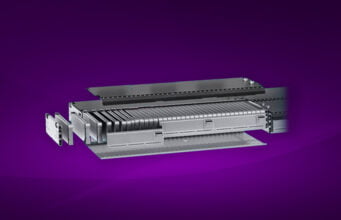According to a report by Space Capital, space infrastructure companies received a record-breaking $14.5 billion of private investment last year, up more than 50% from 2020. Thanks to “mega-rounds” of $250 million or more by Planet Labs, Sierra Space, and Elon Musk’s SpaceX, more than $4.3 million was added in the fourth quarter alone. But billionaires aren’t the only ones with a vested interest in intergalactic innovation.
There is a great effort from not only high-profile investors and startups to develop new space technologies but also from Governments and Aerospace & Defense giants from around the world with tremendous R&D power.
The Space Economy is a multi-billion dollar industry today, but many are expecting it to surpass $1 trillion in the coming decades, which is bringing new opportunities for investors to capture this growing segment of the global economy potentially. The Commerce Department is already throwing its support behind the American space industry with ambitious regulatory reform and promotional efforts goals.
Space stocks have been under intense selling pressure in the recent rotation out of speculative growth investments. “many endeavors will indeed fail, but there will be generational winners that emerge out of the rubble, ” Deutsche Bank analyst Edison Yu reminded investors in a recent note to clients. In this article, we’ll look at three space tickers with out-of-this-world potential that should appeal to our long-term-minded readers at current levels.
Momentus (MNTS) is a pure-play space infrastructure company. Unlike Virgin Galactic, which is geared towards being a luxury travel provider, Momentus aspires to be a space infrastructure company for commercial endeavors. This Santa Clara, California-based company states the following as its goal for 2025:
“We aim to be able to provide a full range of infrastructure services in microgravity and deep vacuum, which will open the door to infinite manufacturing possibilities. Impossibly large next-generation structures will continue to pave new paths for even greater human development in space.”
For 2035, they talk about asteroid and moon mining! Before we get carried away, let’s focus on the here and now. Momentus has developed what they call a space transfer vehicle. In short, it aims to offer a ride-sharing service for satellites. You see, most satellites need highly precise orbits. Booking your own launch on, say, a SpaceX Falcon 9 rocket to accomplish that precise orbit is mighty expensive. Momentus allows multiple satellites to hitch a ride on their Vigoride vehicle. In turn, that vehicle will take each satellite to its needed orbit.
Last month Momentus announced that it had signed multiple launch agreements with SpaceX for four upcoming SpaceX Transporter missions, including the Transporter-6 mission targeted for October, Transporter-7 targeted for January 2023, Transporter-8 targeted for April 2023, and Transporter-9 targeted for October 2023. These slot reservations are in addition to a launch services agreement signed in 2021 for the SpaceX Transporter-5 mission targeted for launch in June 2022. Momentus plans to fly its inaugural Vigoride demonstration flight on the upcoming SpaceX Transporter-5 mission, pending receipt of appropriate government licenses and approvals.
Momentus hopes to meet customers’ needs who want to move their payloads to specific orbits that aren’t accessible directly from Earth-based launches. As of Wednesday’s close, MNTS stock was down almost 73% from the price at which it went public via a SPAC merger in late 2020 and down 36% so far in 2022.
Special purpose acquisition companies, in general, had a weak performance in 2021. Our following recommendation is one of the companies that stumbled out of the gate but has potential so vast that it should not be ignored. This is one stock to watch with an industry-wide acceleration likely this year and several other tailwinds.
Leading global provider of space-based data, analytics, and services, Spire Global Inc. (SPIR), had been in business for nine years before the company went public via SPAC merger in 2021. After stumbling out of the gate and lowering guidance in its first quarter, the stock has fallen 85%, creating a possible buying opportunity for anyone looking to get in on a pure-play space company at a low price.
The space industry is still in its early stages of development, making space investing speculative and risky. As a pioneer, by the time SPIR made its way to the New York Stock Exchange, its global satellite infrastructure had been fully deployed for some time – and operating at a very high scale.
The company has more than 110 satellites currently in orbit, collecting powerful insights about Earth and sending them to Spire’s 72 antennas at ground stations in 16 countries. Terabytes of data are then processed and shipped to hundreds of customers worldwide, giving commercial and government organizations the competitive advantage they seek with insights from space. Spire’s subscription-based business model provides predictable income for the monetization of that data, where an annual subscription can cost anywhere between tens of thousands of dollars to the very high millions.
Spire notably booked $43.4 million in revenue in 2021 and ended the year with nearly $71 million of annual recurring revenue, representing 96% year-over-year growth. By 2025 the company expects to expand its customer base and reach $1.2 billion in revenue, forecasted in its investor presentation.
SPIR’s share price is down 53% so far this year. The company will report first-quarter results on Wednesday, May 11th. Analysts expect the company to report $17 million in quarterly revenue and a loss of $0.17 per share.
A few big names are making headlines in space investing, but the truth is, many of the companies that could make substantial future contributions in the industry may still be in their infancy and may not be getting much notice yet. Further complicating matters, the in-depth knowledge, and understanding of this highly specialized industry required to adequately evaluate these companies can be overwhelming.
Since many of the companies in the space arena haven’t had much time to establish themselves yet, space investing can be risky. “It’s important for investors to realize that investment in the space economy requires specialist expertise. We believe this will become more apparent in 2022 as some of these overvalued companies come back down to Earth, and the quality companies rise above,” Space Capital managing partner Chad Anderson said.
Why not let the pros take care of some of the leg work while casting a wide net over many exciting prospects in the field by choosing a managed fund that offers exposure to attractive prospects in the burgeoning space industry?
Procure Space ETF (NYSE Arca: UFO) is the first global aerospace & defense fund. UFO tracks the S-Network Space Index, which focuses on companies that are significantly engaged in space-related activities. The companies included in this fund span several industries, including (a) satellite-based consumer products and services; (b) rocket and satellite manufacturing, deployment, and maintenance; (c) space technology hardware; (d) ground equipment manufacturing; and (e) space-based imagery and intelligence services.
The fund divides its constituents into two tranches. The first tranche is comprised of non-diversified companies that derive at least 50% (but typically 100%) of their revenues from space-related activities. The second tranche is comprised of diversified companies that play a significant role in the production of space technology and equipment. The non-diversified tranche is then given 80% of the weight of the Underlying Index, and the diversified tranche is issued 20% of the weight. UFO price is down 16% so far this year. The fund pays a comfortable 1.71% yield and comes at a cost of 0.75%.
Where to invest $1,000 right now...
Before you consider buying UFO, you'll want to see this.
Investing legend, Keith Kohl just revealed his #1 stock for 2022...
And it's not UFO.
Jeff Bezos, Peter Thiel, and the Rockefellers are betting a colossal nine figures on this tiny company that trades publicly for $5.
Keith say’s he thinks investors will be able to turn a small $50 stake into $150,000.
Find that to be extraordinary?
Click here to watch his presentation, and decide for yourself...
But you have to act now, because a catalyst coming in a few weeks is set to take this company mainstream... And by then, it could be too late.
Click here to find out the name and ticker of Keith's #1 pick...







